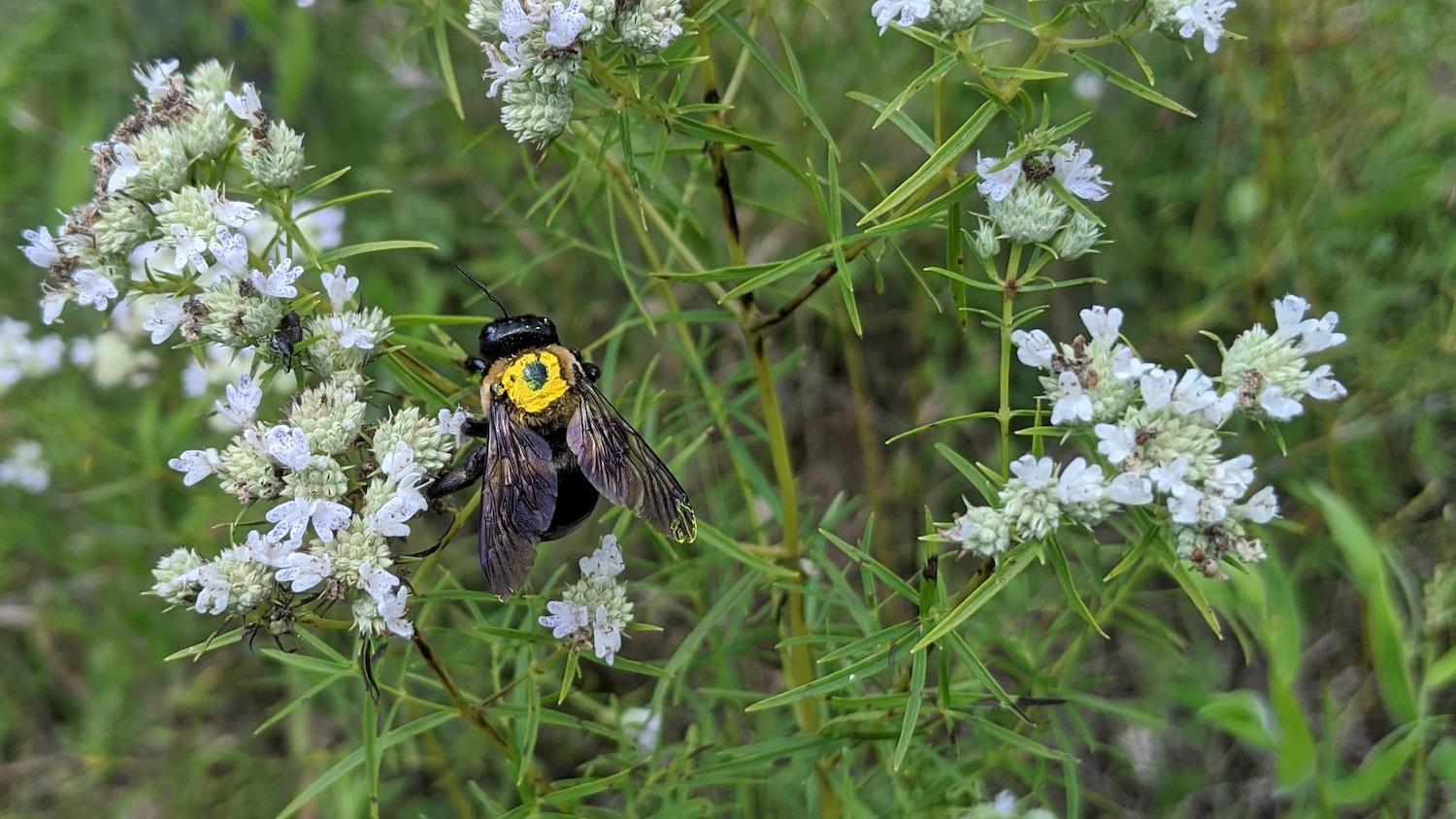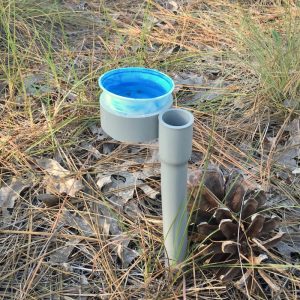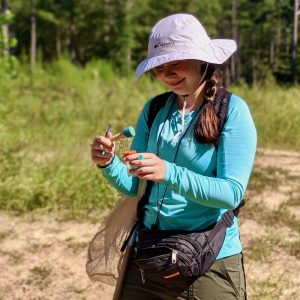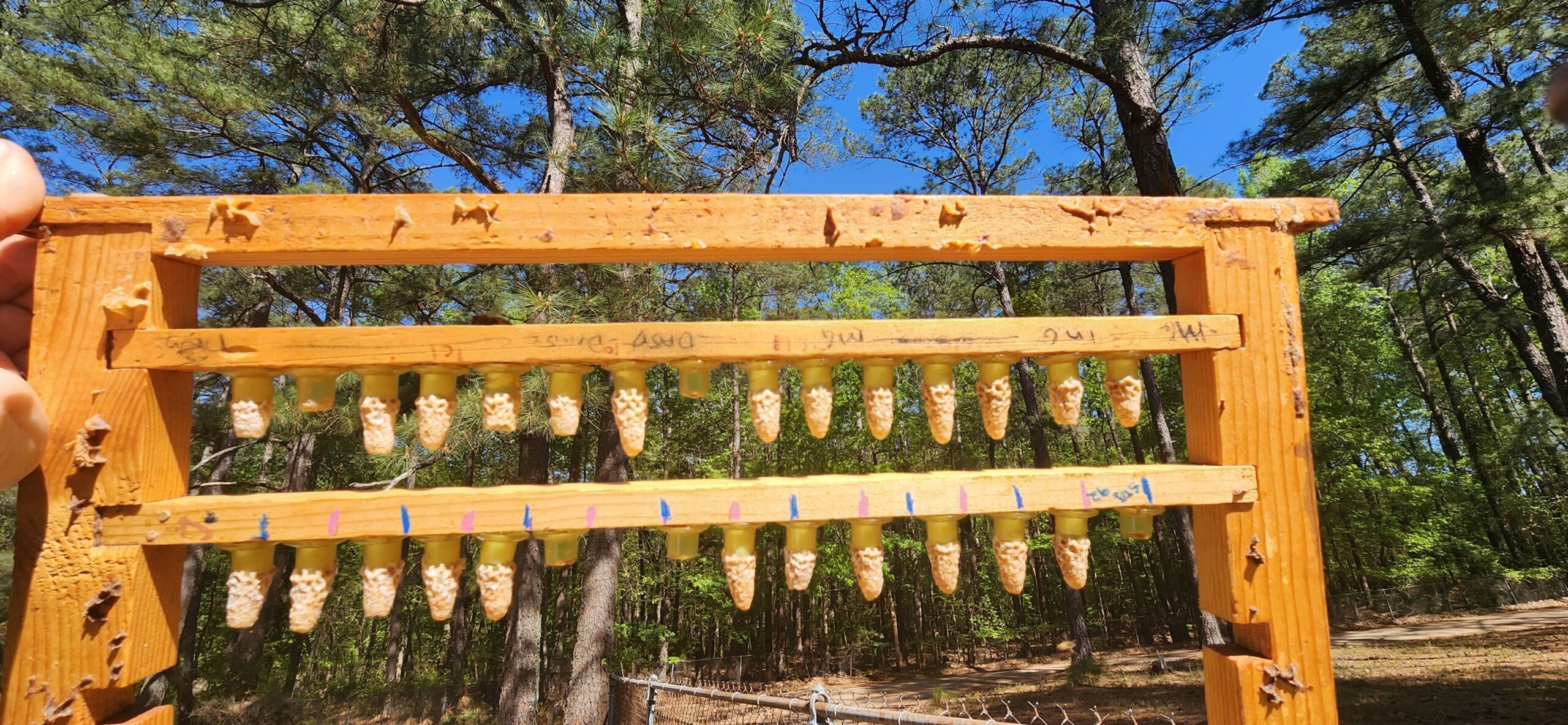Counting Bees Needs A Recalibration

A new study confirms that one of the key tools used to assess bee diversity and population size is flawed. The good news is that researchers have been able to quantify the problem, so that scientists can account for this problem in future studies.
One of the first steps in any conservation strategy, whether bee or buffalo, is to know how many species and how many individuals from each species are present in an area. Bee biologists have suspected that one of the most commonly used tools to count bees is faulty, but no one knew exactly how faulty until now. A new study from NC State researchers has quantified the bias associated with pan traps, and suggested methods to help bee biologists everywhere assess their tools in order to calculate more accurate population estimates.

Pan traps are brightly colored bowls of soapy water designed to lure in and capture nearby bees. Researchers have known that, due to their design, the pans do not effectively lure all species of bees and yield very different results when compared to other methods of trapping like aerial netting. Although methods differ, it wasn’t clear which method accurately reflected the abundance of bee populations. This led the team of NC State researchers to incorporate a mark-recapture study, allowing them to effectively measure the inaccuracy of the pan traps themselves.
“We were surprised that pan trap capture rates were not well correlated with absolute population estimates generated from mark-recapture methods,” says Emma Briggs, a graduate student of forestry and natural resources and co-author of the study. “But, aerial netting capture rates were well correlated, indicating that this sampling method likely provides a better representation of the abundance of the underlying bee community.”
For five weeks, one team collected bees using standard methods – pan traps and aerial netting. Another team marked bees with dots of paint to estimate the population sizes of each species via a mark-recapture study. The number of bees caught in the pan traps was not a good indicator of their actual population sizes, as estimated using mark-recapture. This not only painted a skewed picture of what species were actually present, it also impacted their estimates of species abundance.
“Lots of studies have compared bee bowls to netting and found that each provides a different picture of the bee community,” says Elsa Youngsteadt, a professor of applied ecology at NC State and co-author to the study. “But, ours is the first we know of to bring in mark-recapture as a tie-breaker that accounts for sampling bias to tell you how many bees of each species are really in the underlying community.”
As the old saying goes, an ecologist is only as good as their tools, and this research is one of the first of its kind to take a closer look at how those tools are actually performing. By better understanding the limitations in bee population data collection, researchers and ecologists are better able to accurately measure changes in population numbers. This affects bee conservation initiatives specifically, but has implications for all population monitoring research with a clear call to action to double-check the effectiveness of the tools.

“Pan traps are likely still useful for bee diversity surveys, but researchers should consider their limitations when measuring bee abundance,” says Briggs. “In the future, I hope researchers use mark-recapture techniques to validate other bee sampling methods to make sure that we have the information needed to conserve wild bees populations and their vital pollination services.”
The article, “Estimating bee abundance: can mark-recapture methods validate common sampling protocols?” was published in the journal Apidologie on March 11, 2022. The paper is also authored by Christopher Baranski, Olivia Münzer Schaetz, and Gabriela Garrison from the North Carolina Wildlife Resources Commission; and Jaime Collazo from North Carolina State University. The research was funded in part by the USDA National Institute of Food and Agriculture, Hatch project 1018689, and North Carolina State University.
Media contacts
Emma Briggs | emma.briggs@uga.edu
Elsa Youngsteadt | ekyoungs@ncsu.edu
Michelle Jewell | majewell@ncsu.edu | 919-515-3766


